The Evacuation Of Dunkirk Part One: Overview & Background
August 7, 2017 by oriskany
“Dunkirk” is Christopher Nolan’s new World War II movie, recently arrived in theatres. Millions will be seeing this movie, and perhaps learning about Dunkirk for the first time. But what’s the story behind this World War II drama, and what are the wargaming potentials for us here at Beasts of War?
Follow Dunkirk Week Here
Over the course of the coming week, we’ll be publishing a series of articles on Dunkirk, explaining its background, what happened, who was involved, and its place in the World War II timeline. Most importantly, we’ll be looking at the different kinds of wargames that can be used to recreate some of the battles around this amazing event.
First things first. Dunkirk was not a battle. It was an evacuation, carried out by the British Royal Navy and French Navy, along with other Allied ships and thousands of civilian craft. The object was to save hundreds of thousands of Allied troops who’d been trapped in the port of Dunkirk by German armies invading France in 1940.
Although not technically a battle, there was a great deal fighting around Dunkirk as Allied units fought to buy time for the evacuation to be carried out. The Germans were equally determined to break through and crush these Allied units before they could escape. There was also ferocious fighting at sea and in the air over the evacuation zone.
So before we start looking at specific engagements surrounding the Dunkirk evacuation (and what wargame systems can be used to recreate them to best effect), let’s review the backstory. How did the British and French get in such a horrific situation, and how were at least most of them rescued from certain death or imprisonment?
“Case Yellow”
Blitzkrieg in the West
World War II in Europe started on September 1, 1939, with the German invasion of Poland. After an uneventful winter, Germany next invaded Denmark and Norway on April 9th, 1940. This was the first MAJOR fight between German forces and the western allies of France and Great Britain.
However, the real fight started on May 10th, 1940, when Germany launched “Fall Gelb” (Case Yellow), their blitzkrieg invasion of Western Europe. Three German army groups, about two million men, smashed into Luxembourg, Holland, Belgium, and France, intent on taking half of Europe in one stunning campaign.
Also opposing the German armies was the British Expeditionary Force (BEF), commanded by Lord Gort. deployed by Great Britain in northern France to help counter any German aggression in the region. It was largely this force that would be cut off at the French port of Dunkirk … and need to be evacuated in the weeks to come.
“Sickle Cut”
The German Plan
As mentioned, the German invasion was built around three massive Army Groups. Army Group “B” (Fedor von Bock) was in the north, tasked with invading Holland and Belgium. Army Group “C” (Ritter von Leeb) was in the south, facing the French border along the “Maginot Line” of fixed fortifications.
As soon as Army Group B started its advance into Holland and Belgium, this triggered the “Dyle Plan” – a response protocol worked out by the British and French to counter such a German attack. They would move into Belgium up to the Dyle River, and combine with withdrawing Belgian forces to set up a united defensive line.
However, this was actually a trap. Only after the BEF and three French armies (First, Seventh, and Ninth) committed to the Dyle plan in Belgium, did the real German attack open … not in the north (as it had in World War I), but in the centre.
This was Army Group “A” (Gerd von Rundstedt), where most of the German panzer and motorized infantry divisions were allocated. They punched through the dense Ardennes Forest in southern Belgium, thick woods where Allied planners had been sure no large mechanized force could penetrate. The Germans proved them wrong.
Once through the breach, the German spearheads rushed through into the French back country. The main Allied forces north of them were already fatally out of position, having moved east into Belgium as part of the Dyle Plan. This just made it all the easier for the German panzers to hook around to the west, behind the Allies.
The Germans wheeled north, driving hard to the English Channel. German generals like Kleist, Hoth, Guderian, and Rommel commanded these panzer groups, corps, and divisions, and once they’d broken through behind the Allied line, there was no stopping them. In just 11 days, Kleist’s spearheads reached the Channel coast at Abbeville.
This is what sets up the disaster at Dunkirk. Now that Army Group A had hooked around behind them, the Allies in northern France and Belgium (the Dutch had already been forced to surrender) were pressed from the front by Army Group B. These Allied forces were split off from the rest of the French Army, and pressed from three sides.
Operation Dynamo
Rescuing the BEF
As early as May 20, even before the Germans completed their drive to the Channel, Winston Churchill realized that the BEF might have to be evacuated. To avoid public panic and French recriminations, he secretly ordered Admiral Sir Bertram Ramsay to start working on a plan to get the British Army safely home.
The evacuation eventually put into effect was dubbed Operation Dynamo. It would involve an immense effort of not only the Royal Navy, but also a vast flotilla of smaller, civilian vessels. Basically, anything that could float was used to sail across the English Channel and pick up as many of the encircled British soldiers as possible.
Of course, the Germans wouldn’t patiently allow the BEF to get away. Already their spearheads had crushed these northern Allied forces into a small and shrinking pocket around the Channel port of Dunkirk, between Calais and the Dutch border. Time was running out, and by May 27, 1940 … Operation Dynamo was put into full effect.
But this…wouldn’t be easy. Operation Dynamo would also involve desperate holding actions around the collapsing Dunkirk perimeter, naval protection against U-boats, and air cover against the powerful German Luftwaffe. Simply put, huge German “jaws of death” would have to be held open while hundreds of thousands of troops to escape.
Of course, we’re just getting started here. Every day this week we’ll be putting out another article about Dunkirk and Operation Dynamo. Please check out our next one where we start to look at wargaming options for Dunkirk, and drop your comments in below. Have you seen the movie yet? How did it stack up against history?
If you would like to write an article for Beasts of War then please contact us at [email protected] for more information!































![How To Paint Moonstone’s Nanny | Goblin King Games [7 Days Early Access]](https://images.beastsofwar.com/2024/12/3CU-Gobin-King-Games-Moonstone-Shades-Nanny-coverimage-225-127.jpg)









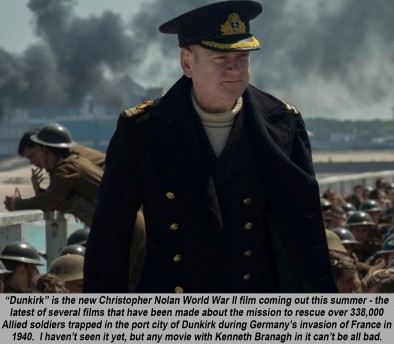
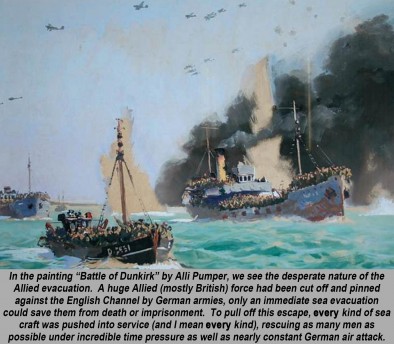
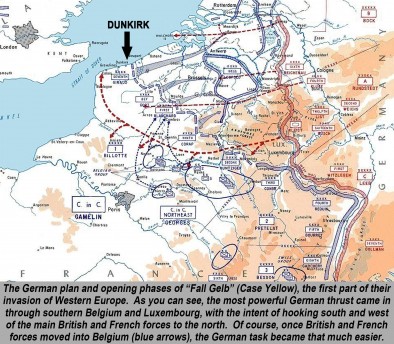
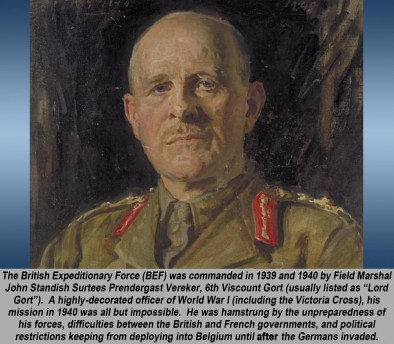
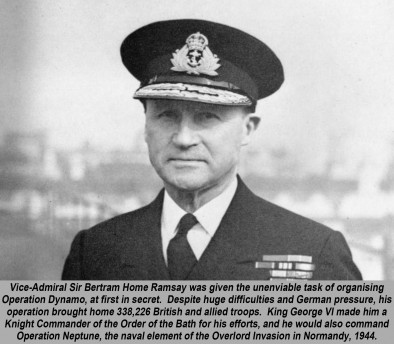
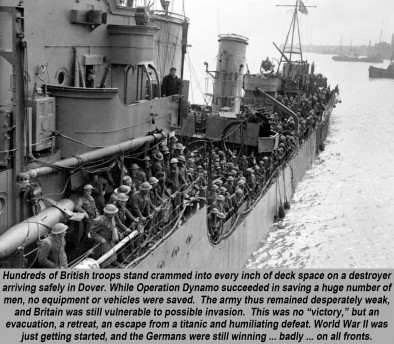
































Just a note on the shortage of equipment, even before the events of Dunkirk the BEF was short of equipment. I used to work in the Imperial War Museum in the Museum Archive(the bit that looks after the history of the Museum itself), part of my job was cataloguing the documents relating to the operation of the Museum from 1939-1945 (or the Second World War collection) included in those documents were the records of requisition of all the serviceable equipment from the Museum collections to be sent over to the BEF in France from the early days of the war.
Indeed, @commodorerob – on the idea of heavy equipment and tanks, we get into that a little more in the Flames of War section (15mm, Part 02). The tanks that were there, the 18/25 pounders (WW1 18-pounder artillery that had to be “re-bored” to fire 25-pounder ammunition, if memory serves), the 2-pounder ATG . . . it’s all very “early war” to put it kindly. And the crazy thing is the BEF was by far the best equipped / mechanized part of the British Army at the time. I’ve read that the British Army was always the poorest relation during… Read more »
I guess it comes down to the fact that the Royal Navy is the senior service and that the RAF being seen as the force that needed to be strong to defend the Island. The British Army was always the poor relation look at the issues they had in the 18th and 19th Centuries
@commodorerob – can’t argue with that. 😀 Looking at how British line regiments were put together, administered, and operated during the American Revolution (another project I’m working on at the moment) – you really see that.
Great write up @oriskany I’m looking forward to seeing how this develops and what gets fed into the comments from the rest of the community.
Thanks, @avernos , and thanks for helping out with the great video segment! I wasn’t kidding about those truck piers, I really didn’t know that. I mean I’d seen the trucks rusted and burned out on the beach, and always wondered why they were in such neat rows like that. I’d even thought, “well, gee … no wonder the German aircraft were able to blow them all up so easily, the British parked them in such neat rows.” I love sh*t like that. No matter how much you may know about a topic, there’s always something you don’t know. 😀
I noticed in the video some mention of Churchill and his appointment as Prime Minister. If anyone is interested there is a film due for release in November called “Darkest Hour” about Churchill and the early days of World War II starring Gary Oldman.
https://youtu.be/EnnEH7JimwY
I have to say Gary Oldman is a superb character actor, probably one of the best and although this is only a trailer, he looks like he’s turning in another excellent performance.
Hopefully it will be a good film, there have been a number of dramatisations of Churchill’s over the years.
Thanks, @onlyonepinman – yeah, we talked a lot about the Churchill’s starting as Prime Minister during the Sea Lion series, so I didn’t want to re-tread too much ground here. He started the day the Germans released the Case Yellow invasion (talk about a bad first day on the job). We wanted to touch on his political “instability” and how many thought he was the wrong man for the job and how weak he actually was … at first. We see Churchill as this “iron bastion of British democracy” … and that’s certainly true, but that all comes after Dunkirk… Read more »
Sadly victories* in war have always been good for politicians. I suppose in this one case, the case of Churchill, it was fortunate for the world that it is.
*I know, Dunkirk was technically a defeat, but it was also a resounding success.
Well said, @onlyonepinman –
As Churchill said himself:
“We must be very careful not to assign to this deliverance the attributes of a victory. Wars are not won by evacuations.”
Let’s face it, Churchill didn’t exactly have a great track record of amphibious operations @oriskany. Plenty of dead Anzacs would testify to that. It was a bloody good job he left it to a meticulous planner in Ramsey on this occasion.
Oh, absolutely, @brucelea . We mention the “Ghost of Gallipoli” in the interview. As for Ramsay, not only was he promoted and congratulated by the King, but he’d later plan and command the Operation Neptune aspect of the Overlord invasions later in the war.
Oh, and forgot to mention – Gary Oldman as Churchill sounds great. Still a fan of Bob Hoskins, though,
Apologies for t he terrible YouTube version. You have to set speed at 1.25. They also don’t have the first 3 minutes of the movie, which is where they’re talking about Dunkirk. 🙁 🙁
https://www.youtube.com/watch?v=yyKGxvAcqfM
Gentlemen. Thank you for doing this. The rest of this week will be some wonderfully informative sessions and after today’s I’m going to look forward to each. I’ve got no doubt this will have all of @oriskany usual thorough research and knowledge so I guess I’ll get to learn a lot about a period I’m a bit weak in. I saw the movie a few weeks ago and was genuinely impressed. There were flaws but I think most complaints seem to be the way Nolan made such a huge event so intimate to the audience. No, there were not thousands… Read more »
Thanks very much, @toofless – the three days deals with Dunkirk / Dynamo in three specific wargaming scales – 15mm, 20mm, and 28mm, with the last day dealing with “command scale” games and air operations. We’re glad you liked what you see so far and hope you enjoy the rest of the series! 😀
Sorry have to do this
What about 6mm?
Seconded – 6mm using “I Ain’t Been Shot Mum” rules from TWO FAT LARDIES
You don’t have to be sorry. 😀 Hell, everyone who knows me knows my favorite wargames work on 1:6000 scale (1 inch hex = 150 meters) in Panzer Leader updates, etc. If we’re sticking with miniatures, 6mm would definitely be the best for the larger Dunkirk perimeter battles – so Lille for the French and Wytschaete / Ypres Canal for the British. One Dunkirk perimeter battle I’ve enjoyed doing in Panzer Leader 1940 is Hondschoote – British 3rd Infantry (much more on them in Part 03) is pulling out and handling over to a French DLM . . . as… Read more »
Around 120,000 French were evacuated from Dunkirk (plus Dutch and Belgians too) and the operation was extended by a further day to evacuate 40,000 French troops I seem to remember. However in popular mythology the French are partly forgotten, as really their entire performance in 1940 is written off as lacklustre. But if you delve into some more recent works on the 1940 campaign you do see some very hard fighting from the French. Indeed after Dunkirk the French Army morale increases as it shortens it’s Frontline and we forget the war continued for a while after the events of… Read more »
I don’t know exactly why but from the french side of history, this battle has never been teached as a great success despite the 120k soldiers evacuated. I’ve personally eard from this battle because i’m from Dunkerque but for many kids in school it’s more like a defeat rapidly addressed in history books but not much. Hopefully, the success of the movie will allow teachers to revisit it.
Interesting, @piers – my number for French evacuees is 98,000 (Lieutenant Colonel Eddy Bauer, Brigadier-General S.L.A. Marshall) – but admittedly these sources are a quite old and new records may have come tot light that amend the number. Or could these extra French evacuees may have been part of Operation Ariel / Operation Cycle (subsequent evacuations @avernos mentions)? Or, like I said, my numbers might just be out of date. Please tune in tomorrow, @bawonsamdi – where we talk about Lille, where the French First Army really wins a lot of extra time for Dynamo (3-4 days by Churchill’s estimate,… Read more »
Will you cover the Ypres-Comines Canal battle and it’s significance to saving the BEF?
All sources I have point to around 120K French troops being evacuated from Dunkirk, though the majority would be soon returned to France. Richard Hudson noted a figure of 122k evacuated from Dunkirk. Whatever the figure, significant number of French troops were rescued, though sadly they were returned to France very quickly to reinforce the army.
Yes, we do cover Ypres Canal in Part 03 (the 20mm Battlegroup episode, to be exact). We also talk about it in a little in Part 04 (Bolt Action). Granted, these are short articles (did this whole SERIES in a less than a week) and most of the content is about the wargames themselves (and which kinds of Dunkirk-themed battles fit beast with characteristics of each game and scale), so there isn’t a great depth of historical detail in the battles. Yeah, the more online references I poke around in, the more I’m seeing higher numbers of French evacuees. I… Read more »
sounds cool @oriskany! 🙂
As always @piers , I hope I do Battlegroup justice. No secret by now, I guess, it’s my favorite WW2 minis game. 😀
Good work Jim. Neither the French orBritish believed the Germans could get through the Ardennes. From what I’ve read they actually achieved the feat by using French cycle touring maps of the area
Thanks, @torros – I would add that quite a few German staff officers may not have believed that Kleist’s panzergruppe could get through the Ardennes, at least in the short amount of time allocated by Manstein’s “Case Yellow” plan. I hate to say it, but the British and French kind of helped a little here with stubborn adherence to the Dyle Plan further north (literally putting their heads into the noose for the Germans).
France 1940 is one of my favourite periods of the war for gaming. As @piers says the Germans did get a bloody nose. I think the Germans lost about 800-1000 tanks in the battle for the low countries and France
I definitely prefer early war for a number of reasons, reduced ranges for many of the heavy weapons opens more room for maneuver, etc. We really sink into that topic in Part 04 when we talk about 28mm Bolt Action – where short ranges really pose a problem. But this early in the war, these problem is greatly ameliorated in my view.
I can see BA working at a street skirmish level. the british player has to get from one side of the table to the other beyond the French line with german snipers and machine gun nests to avoid.
@commodorerob – A British “cut-off patrol getting through German lines” is one of the pitches in Part 04. 😀
I am looking forward to the release of Rommel next month where 1 stand equals a company. Should be able to cover several km’s on s 6*4 table and to done nice big operations
Company-level units. Nice. That should allow a whole division to be put on the table without too much trouble (I would be guessing 50+ pieces, including 25-30 line companies, artillery batteries, support assets, battalion / regiment HQs, etc.
You can do that kind of thing in Panzer Leader, technically, but since most units there are platoons you need about 3-4 times as many pieces, which makes it a little cumbersome. Best when done as a “team” game.
have you looked at Panzer General Deluxe? Company/Battalion level games
Is this a deluxe edition of the old computer game “Panzer General” by SSI?
https://en.wikipedia.org/wiki/Panzer_General
WOW an interview and an article! I really appreciate the background information presented in the article. As I am from “over the pond” and not a military historian, I only knew the very basics. This really put the whole thing into perspective for me.
Looking forward to seeing how it all gets applied to the different game systems.
Thanks @gladesrunner ~
“WOW an interview and an article!” … Yeah, and four more of the same to come. 😀
We still gotta get out and see this damned movie. 😀
My great uncle was 19 when he was rescued from the beaches. He’d enrolled at 18 and because he knew how to drive and was a handy mechanic he became a tanker. After returning to the UK his regiment was rolled into the 8th army and he drove tanks in both the African and Italian campaigns. He really didn’t speak much of the war afterwards other than to say he had a “very bad war.” I’ve been told that after Italy he fought with the Jewish Brigade, and from what I gather he was placed in charge of a unit… Read more »
Been to Normandy myself a couple years ago for the 70th Anniversary. Pegasus Bridge is amazing, especially when you get to markers that show where the actual gliders landed, and how crazy close they were. The new bridge is now in place, the original bridge is taken apart and put in that nearby museum, where the metal of the bridge is still pinged in places by bullets or shrapnel. Walking out into the surf at the Vierville Draw, Dog Green Sector, Omaha Beach at 6:45 in the morning, walking about 100 feet out into the surf and turning back to… Read more »
Watch the film it’s probably the most intense film I’ve ever seen. At one point I thought it was going to bring my heart condition on.
Awesome. With Christopher Nolan, you know the movie will look amazing. With his recent attempt with Interstellar to make the astrophysics as “realistic” as possible, I had high hopes that he’d do Dunkirk “correctly.”
In regards to politics in war I think You Clausewitz said it best. “War is nothing but a continuation of politics with the admixture of other means.”
Wars are always run by politicans with generals coming a poor second
Like we were saying way back with the “Four Levels of Wargaming” –
How do you know when you’re at the “Strategic” or “Grand Strategic” level?
When you’re not “playing” a “military character.” It’s when you’re “playing” a civilian politician.
To run the actual game I would consider something simple. A number of games being played with the Allies defending against German attacks. You could then relate the results maybe in terms of points results of the number of turns the defenders hold out for to an amount of time and this would then equal the number of men taken off the beaches. You could add more complications in regards to the air war and the attacks on the British shipping
Absolutely, @torros – Running a series of games, and the aggregating the results together into an overall “victory conditions structure” that may be simultaneously impacted by air and naval games (or side mechanics, failing full games) is totally the way to do this.
I really enjoy your articles @oriskany, and this seems to be a great one again, thank you guys! My fascination with WW2 comes mostly from my families past and the fact that I wouldn’t be here with out it, what is a weird thing to say if I think about it. But my grand parents from my father side only me because they left croatia to escape the Russians and Serbs, they met on a ship to Argentina. My Grandfather came from the country side and my Grandmother from the coast so under normal circumstances the probably wouldn’t have met… Read more »
Thanks, @donlou – “As far as I know and I could be wrong so please correct me if I am, one of the reasons why the allies had enough time to pull of the evacuation was that the german tanks stoped for maintenance and to catch up with the infantry they left behind during the blitz. ” That’s definitely a big part of it. We talk about this in detail in Part 05 as a preamble to the air operations … why the German panzers halted and the Luftwaffe was sent in. There’s a big halt order given to elements… Read more »
That idea of using trucks as a sort of make shift landing spot is in the Dunkirk movie.
The one thing the movie doesn’t show is the scale of the entire effort.
It’s almost as if only a few hundred men were rescued …
also I believe the film skips over the beatings handed out by the British on the beach to maintain discipline
Wow, I had never heard of that. We do talk briefly about accounts of British soldiers of Coldstream Guards / 3rd Infantry actually firing on fellow British soldiers of another division to stop a rout near the Ypes Canal (not on the actual beaches, but along the perimeter where the fight for time was being waged).
there is anecdotal evidence of deaths as well, but while I’m inclined to believe order had to be restored through physical punishment I’m less inclined to believe people would be beaten to death to maintain order, but in war who can say
I have seen “fired on” and “shot” (Guardsmen of 3rd Inf Div against other British units in state of rout) – but again this is near the canal, and not the beach, and the accounts are anecdotal at best. Worst case scenario = handful of men and only at one incident.
Thanks, @limburger – It’s definitely huge – eight days, 338,226 men saved, 30-40,000 or so left behind (last rear guards – this doesn’t include casualties during the battle). The pocket was originally 40 miles across in some places. This really becomes a factor to consider when people start talking about how to set up Dunkirk themed battles. The scale is huge, so don’t worry too much about making your FOW, BA, or Battlegroup game directly impact the ship evacuations or vice-versa. I did the math and the engagement at Lille alone (admittedly this is one of the larger ones) could… Read more »
Istvan V is D Day and Dunkirk all in one go when you think about it.
As in this one? https://www.youtube.com/watch?v=2tk45lsPTG0
that’s the one were the first Primarch v Primarch to the death battles.
Okay, “to the death” battles. Just asking here, would these make this 40K event more like a Battle for Lille, where part of the French First Army stood and “died” to buy more time for OTHERS to escape, or a delaying action where you have to hit the enemy and run to buy YOURSELF time to escape? Both were at Dunkirk. I’m just trying to understand which “flavor” of battle we’re talking about,.
Great article, looking forward to the next installments! I’ll have to resist an EW FoW army just a little longer (still working on my DAK from V4 launch!) 😀
Would you be interested in some pictures from the Battle of the Lys and evacuation at De Panne? I’ve also got some recent, detailed maps on the Belgian and German divisional dispositions if you like 🙂
Thanks, @neves1789 – I know what you mean. Can you believe my v FoW DAK isn’t finished yet, and I got those during the boot camp in March? 🙁 🙁 🙁 Then again, I had that army “pre-built” before I got to the boot camp, I just have to figure out whether I’m going to use my boot camp minis to build ANOTHER DAK force or re-purpose them for the Eastern Front.
Don’t feel bad.
I haven’t even begun painting the stuff I got from bootcamp … and that’s without even buying any additional stuff I’d need to make it more complete.
Yeah, @limburger , I usually pride myself on keeping an absolute minimum “lead / plastic mountain.” Seriously, it’s usually near zero. But this summer it’s been a little backed up. 😀 Gotta fix that in the early fall.
Technically, you could go with the evacuations of Hoth and Yavin in Star Wars. Sure, most of the Yavin stuff is Legends now, but you have the desperate rush to get people out as quickly as possible.
Hell, imagine a Star Trek scenario where you’re using ships to evacuate a planet while the main fleet is trying to hold off several Borg ships that are slowly advancing…essentially using the fleet as the RAF while any ship capable is moving people away as quickly as they can…
@sotf – Star Trek fleet battle to save the people of a colony or planet from the Borg – now that’s a great idea! And yes, @siygess and I were talking briefly about Hoth above, but hadn’t considered Yavin. Thanks! 😀
Great read as ever Jim, now to catch up with today’s instalment!!
Thanks very much, @brucelea ! Tomorrow (Wednesday – Part 03) we shift focus a little more on the British, especially 3rd Infantry Division. 😀
Probably already mentioned but 40k Dunkirk would fit into the fall of Cadia.
If I remember right there was an evacuation just before Cadia was destroyed.
The difficult part would be for 40k and any sci fi with a planetary evacuation how do you get the civilian ship aspect into this.
Love the articles so far.
I think you could a pretty good Dropzone commander battle with massed UCM troops backed up against a coast line with a massed Scourge army attacking & dropships having to evacuate the troops. Maybe point for each full drop ship that gets off the board?
Oh, absolutely, @krisp278 – I don’t even know that much about DZC and DFC besides what I’ve seen in BoW demo games and the like, but the instant Warren asked what kind of space / sci-fi variants we could come up with, I immediately thought of “Evacuation Fleet Commander.” 😀 😀 “Evacuation Zone Commander” would certainly also work. The great thing about that setting is that, from what I remember, Earth has already lost a vast amount of its colonized planets and is now trying to take some of them back. So they’re “used” to losing planets and have probably… Read more »
Just starting with the articles and videos today, and it’s already thursday. But I guess it will be a good evening. Nice discussion in the video and as always good writing by @oriskany . Gamewise I would go at it (as always) with 15mm FoW. We played a lot of larger engagements with FoW and it worked quite well. With a little squeezing of the rules here and there. Letting my ideas flow I would love to play something like this with Romans and Carthegians. Imagine the campaign that finally destroyed Carthage failed and the Romans had to retreat from… Read more »
Awesome, @bothi – I was hoping you’d show up. 😀 Yeah, in Part 2 we sink into how to do these Dunkirk battles in FoW 15mm a little deeper. What specific traits a big 15mm game has, and what historical Dunkirk engagements are the best fit. Basically, I just picked the bigger engagements with the most possible tanks (big battles, tanks = FoW), like French III Corps / 1st Army at Lille. 😀 I think you’re the first person to bring in an ancient setting for a seaborne evacuation. I’m pretty sure there is a “negative example” (i.e., a time… Read more »
Glad I could match your expectations @oriskany . Classics aren’t my forte either. But I played a lot of Onus (awesome board/tabletop game) lately which let’s you battle between romans, carthegian, greeks, persians, etc.. Maybe that influenced me a bit 😀
And yeah due to the Roman military system before all the Reforms, the legionaries would probably be evacuated first.
@bothi – any excuse to put a war elephant on the table is good enough for me. 😀
Was away last week for all this great content which you have put out, and like an idiot ive watched it back wards lol “Once upon a time far fra away” or should i say “year years ago” We played this kind of game with Guard V’s Orks. 1/ Road came from corner to corner, and the Orks in their trucks came down. 4′ x 6′ deep V’s Guard upon a large hill, left the side of the table in-trenched. 2/ Orks had 3 battle waggons full of 20 Gretchin each + Runtherd. (1st contact). But then the first battle… Read more »
Awesome, @nosbigdamus – thanks for the addition. Delay the advance up the road, then a hold the line game, then holding a bridge defense game, yeah, these are all the things we’ve been talking about all week. I especially like how the victory points aren’t straight forward for units destroyed, etc. – (simple kill matches, etc) – but a more nuanced and layered kind of a result.
Have you seen the “40K Dunkirk Scenario” thread?
http://www.beastsofwar.com/warhammer-40k/dunkirk-scenario-ideas/